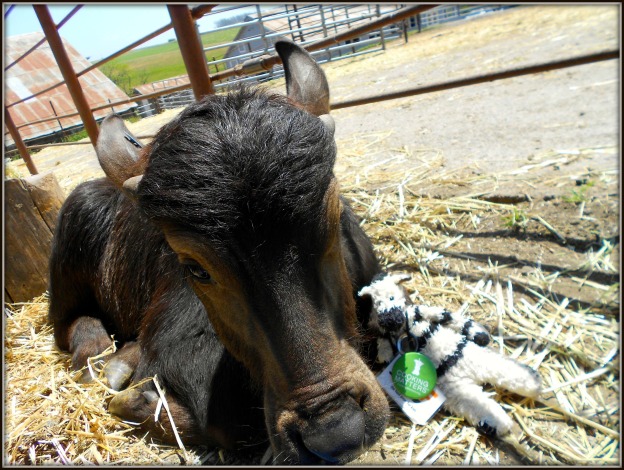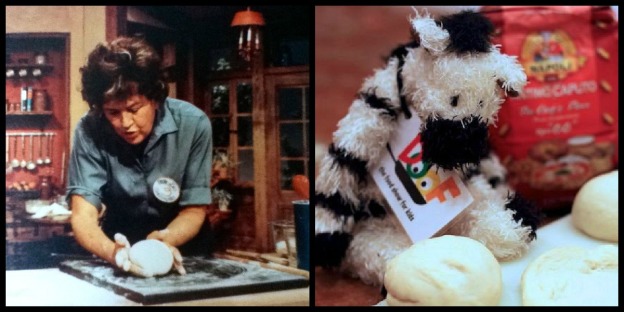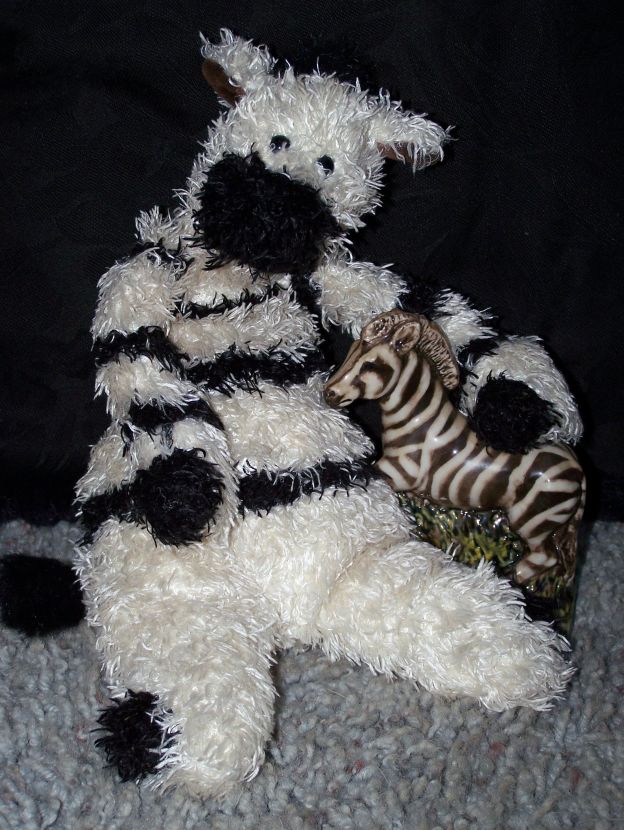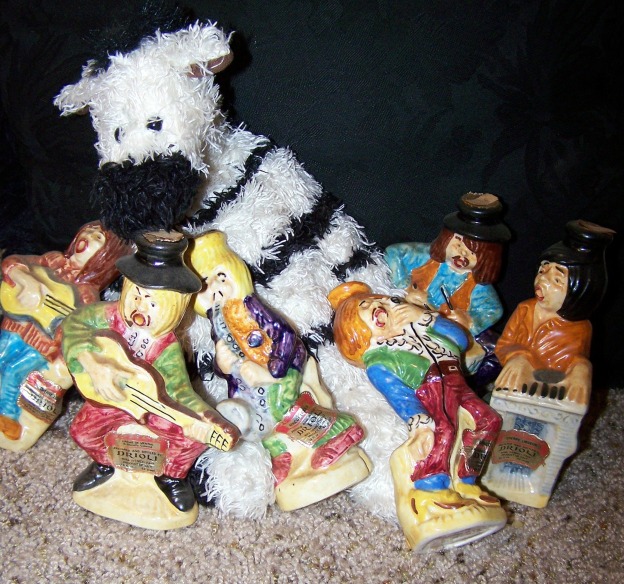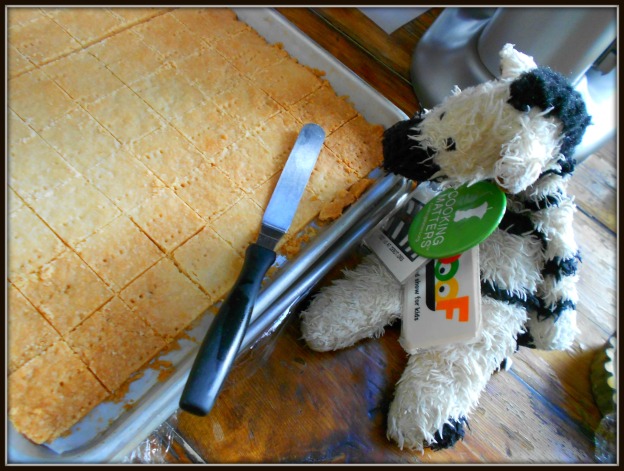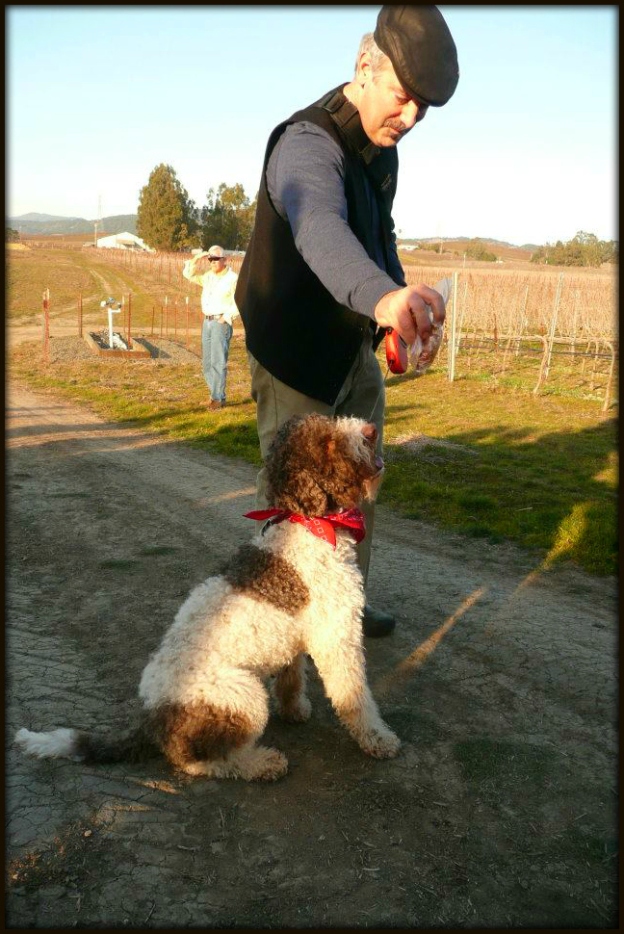When zebras think about good food, three things that naturally come to mind are family, friends and sharing.
So I guess it’s only natural that I’d want to share a story about the amazing cheese that starts with milk from my ultra-cool friends: the Ramini Mozzarella Water Buffalo Family.
If you’re a kid (or even a zebra), you’re probably thinking, “What’s so amazing about mozzarella? I mean: I eat it all the time!”
But guess what? Unless you’ve traveled to Italy, I’ll bet you’ve NEVER eaten mozzarella that’s been handmade using rich, creamy milk that comes fresh from the buffalo—or, as the cheese is called in Italian, mozzarella di bufala.
Why would you have to go to Italy? Because authentic mozzarella di bufala is extremely perishable, so just about the only way to enjoy the real thing is to go right to the source.
That’s usually Italy, where black water buffalo (different from our American buffalo, which are technically bison) have roamed the hills and fields of the Compania region for about a thousand years.
But thanks to Craig Ramini and his wife Audrey, you don’t have to go to Italy to meet these legendary creatures: you can hang out with them AND try the famous cheese made from their milk, right here in Northern California!

Ramini water buffalo have rock star names – from Grace Slick, Pat Benatar & Dusty Springfield to Sting and Shakira!
To really understand the story of mozzarella di bufala, you need to hear it straight from the water buffalo’s mouth.
Since most of the water buffalo at Ramini Mozzarella are named after famous rock stars, some of my favorite kids and I got together to make a music video, followed by an exclusive insider interview with three of the water buffalo calves: Sting, Petula and Lulu.
ZEBOT: First of all, could you please explain why mozzarella di bufala is such a huge deal?
STING: Well, dude, we’ve been around it our whole lives, so it’s just everyday food for us—but, of course, we love it! Ditto for buffalo milk. But we were actually kind of surprised that the cheese has become so famous. I mean, we think it’s awesome, but you know, everyone loves their mom’s food!
PETULA (using a hoof to pull up a link on her iPad): Oh, Sting, really: mozzarella di bufala is famous for lots of great reasons!
Here’s what Sam Anderson had to say about it in the New York Times: “Buffalo milk has roughly twice the fat of cow milk, which makes it decadently creamy and flavorful. The good stuff is almost unrealistically soft — it seems like the reason the word ‘mouthfeel’ was invented — with a depth of flavor that makes even the freshest hand-pulled artisanal cow-milk mozzarella taste like glorified string cheese.”
LULU: Wow, he really does make our moms’ cheese sound amazing—and he’s using a lot of impressive words! Basically, he’s saying that cow’s milk mozzarella has a totally different flavor and texture. Also, not to brag or anything, but buffalo milk is so rich that it gives you a 20% cheese yield from milk—milk from cows only gives you something like 5%.
STING: Yeah. In fact, the kind of milk used for mozzarella is so important that, in Italy, they even make the difference super-clear by using different names for the two cheeses.
Mozzarella cheese made from buffalo milk is called mozzarella di bufala (which means “mozzarella from buffalo”), but the same type of cheese made from cow’s milk is called fior di latte (that literally translates “milk flower”—not sure why, maybe because cows like flowers or something).
LULU: When it comes to great cheese, the region where it’s made is also a big deal. In Italy, mozzarella di bufala is mostly made in Campania and Apulia. The Petaluma/Tomales Bay region of California where we live is a famous American cheesemaking area—and it has a Mediterranean climate that’s pretty similar to Italy.
STING: Yeah, we water buffalo love it! Sometimes visitors come to the farm and they’re like “Hey, where’s all the water for the water buffalo?”
But because it’s not super-hot here, we don’t need big ponds or lakes to cool off. When it rains, we make our own wallows in the pasture. And when it gets warm, Craig hoses us down—it’s great! We’re also really into the native grasses here, which taste fantastic.
PETULA: It’s also very important to understand that mozzarella di bufala and other handcrafted local cheeses are an important part of Italian food culture. In Italy, humans go to the neighborhood caseificio (that’s an artisan cheesemaker) just like Americans might visit their favorite corner bakery.
LULU: You see, Craig and Audrey make their mozzarella di bufala fresh every few days—just like cheesemakers do in Italy, where humans know it’s best to enjoy fresh farmstead cheese “di giornata” (the day it’s made).
And, of course, everyone knows that the best cheese starts with the best milk. In order to get the best milk (or any milk at all) from a water buffalo, you REALLY have to know what you’re doing!
ZEBOT: So tell me about the whole dairy thing—is it sort of like milking cows?
PETULA: No way! I mean, some of my best friends are cows, but they have a totally different personality.
Water buffalo aren’t like modern dairy cows, who are more easily intimidated and will do pretty much anything humans want them to. Water buffalo are very independent thinkers. We’re tolerant to a point, but we decide when and how to cooperate.
STING: You need to understand that even though we calves were born here in the U.S, we’re descended from centuries of wild water buffalo, who had to be constantly on the lookout for dangerous predators like hungry tigers.
That means we’re always super-aware of our surroundings—and ready to take off at a moment’s notice, if we have to.
ZEBOT: Yikes! But I thought your family was from Italy—do they have tigers in Italy?
STING: Um, I don’t think so, dude. But you see, even though water buffalo have lived in Italy for ages, we’re originally native to Southeast Asia. And trust me, the tigers there are REALLY wild.
PETULA: Okay, so let me explain how the milking works. Craig and Audrey figured out that the best thing to do is to let our moms’ natural intelligence work in everyone’s favor.
The milking barn and creamery are converted from an old cow dairy—but when Audrey (who’s a super-talented designer and architect) re-designed our milking barn, she worked hard to create a mellow, churchlike atmosphere where we’d all feel really peaceful and comfortable.
STING: And Craig, who used to work in software development, put his creativity to work in designing milking stalls that complement a water buffalo’s psychology.
See, it goes back to the whole predator thing. In order for our moms to produce milk and let it flow, their pituitary glands have to make a special hormone called oxytocin, which creates feelings of bonding, love and trust.
LULU: But like Sting said before, wild water buffalo originally came from a place where there were lots of dangers, so we don’t naturally produce oxytocin easily, the way cows do.
And we DEFINITELY will not produce it if you try to lock our heads in a metal stanchion to make us stay still during milking.
ZEBOT: Oh, I totally understand—a zebra would never go for that either!

In order to make the moms feel comfortable, Craig (the Dr. Phil of water buffalo) designed these special stalls.
PETULA: Exactly! So the way it works is that our moms go into the barn to be milked two-by-two in special nose-to-tail stalls designed just for them.
They get to choose their own order, too. Some of them run into the barn. Others are more like, “Hey, he gives us a little bit of hay while we’re waiting out here. So if we’re patient, we could get two meals ’cause he feeds us in there, too!”
LULU: Craig says that you need to treat a water buffalo just like you would your best friend. When we feel safe, secure and loved, we cooperate. So he makes sure that during milking time, everything is nice and peaceful. No tractors, no noisy farm work —even the Black Angus cattle next door have to be quiet!
STING: Yup! And since our moms give more milk when we calves are around, we get to hang out in the barn during milking time. Every morning, Craig brings us down from the pasture with these cool colored halters, then lets us chow down on really primo hay. It’s awesome!
PETULA: Craig says that when the love is flowing, the milk is, too!
STING: That is so true—and some water buffalo are overflowing with love AND milk. My mom, who’s named Dusty Springfield, is so generous that she shares her milk with all the calves when we’re out in the pasture.
LULU: Yeah, Sting’s mom is the coolest—we calves all call her “the ice cream truck!” But we don’t ask her for anything in the milking barn, because we know that particular milk is the secret to making the world’s best mozzarella. We’re happy to share—we’re so proud of what our moms do!
ZEBOT: Wow, no WONDER water buffalo milk is so famous! So how does it turn into cheese?
PETULA: Well, the first thing is to be super-careful with the milk. Our moms are milked into special buckets, then Craig gently hand-carries the buckets from the barn side of the building to the creamery side.
LULU: This is really different from big cheese factories, where milk that’s been through high-speed pumps has to travel a long way on trucks to get there from the farm. I mean, I get dizzy just thinking about it! Our moms’ milk only has to travel six feet across the breezeway.
STING: So when Craig gets to the creamery, he pours the milk into this big stainless-steel vat that does three really cool things. First, it keeps the milk chilled until Craig is ready to make cheese.
Next, it pasteurizes the milk—that’s a process that takes all the bacteria out—both the good kind and the harmful kind. In the U.S., this is required by law for all fresh cheeses, which means any that are aged less than 60 days.

In order to make great cheese, you need all the traditional tools of the trade — including microscopic bacteria (not shown).
ZEBOT: But wait: I’ve read a little about cheesemaking—and I thought you NEED the good bacteria.
LULU: Oh, you do. So after the milk is pasteurized and cooled, Craig adds a patented starter that he imports from Italy—this is known as inoculating the milk. So now, the good bacteria in the starter goes to work interacting with the milk, which preps it for making cheese.
PETULA: After a few hours, Craig uses rennet to coagulate the milk (and the special bacteria keeps on working its magic). Next, he cuts the curd into smaller pieces, which increases the surface area and allows the whey to come out of the curd. Craig drains off the whey and uses it to make ricotta cheese.
STING: At this point, all that patience our moms taught him comes in really handy, because now Craig has to wait about six hours for the curd to ferment.
If you like scientific stuff, this means the alkalinity is getting lower and the acidity is getting higher. In order to stretch the curd to make mozzarella, you’re looking for a perfect Ph window of between 4.85 and 5.00.
ZEBOT: Um, that’s a bit too scientific for this zebra—but stretching the curd sounds like fun!

Wondering what fermented mozzarella curd looks like before it’s all stretched and shaped? This is it!
LULU: Oh, don’t worry—we calves don’t understand all the science yet, either. Sting’s just being a show-off and repeating what Craig says. But you’re right: stretching the curd is tons of fun!
ZEBOT: Have you guys ever tried it? Because I’d really like to, but I’m not sure about the whole hoof thing.
STING: Well, we haven’t gotten around to it yet, but I’m sure we could a great job—and so could you. What Craig does is pour almost-boiling water over the curd to melt it so he’ll be able to stretch it, kind of like Silly Putty.
PETULA: To make this happen, Craig stirs and kneads the whole steaming mass until it forms an elastic sort of paste that he can stretch into threads without ripping. In Italy, cheesemakers call mozzarella a pasta-filata cheese, which I’m pretty sure means “thread-making.”
LULU: Oh, wait, I want to use some Italian, too! So the next part is where Craig divides the stretchy, slippery curd into equal portions—that technique is called mozzatura and it’s actually what gives mozzarella cheese its name.
STING: Anyway, after that, Craig and Audrey form the mozzarella into balls or braids or whatever other shapes they want, then cool the cheese down a bit so it can be sliced.
And then: it’s ready to eat! I’ve heard cheese-loving humans say that tasting fresh mozzarella di bufala while it’s still warm is as close to heaven as you can get without leaving this Earth!
ZEBOT: Hey, I heard that: I tried some—and it was so soft and delicate and creamy that it made my stripes tingle! Tasting the cheese made me see why someone would go through all the hard work to make it.
Is that what motivated Craig and Audrey?
PETULA: Well, sure, that was a big part of it. And you know how we told you that love plays such a huge role in a water buffalo’s producing milk? It turns out that’s what helps humans create wonderful things, too.
LULU: Starting Ramini Mozzarella was a huge change (and a huge challenge) for both Craig and Audrey. The way Craig came up with it was to do what he calls a “mind map” of the things that made him the happiest.
STING: Yeah, and he came up with three big ones. First, when Craig was a kid, he always felt happy when he was with his grandfather, who owned an Italian restaurant.
Later, when he visited Africa and was around big animals and adventure, he was happy. And when he worked in high-tech, he worked with super-creative self-starters who were always trying to pull off something new—and that was another ticket to happiness.
PETULA: And like with so many family recipes, it was love and family that helped all the ingredients come together. Audrey’s food-loving brother and sister-in-law, who lived in Italy, asked why Americans didn’t make mozzarella di bufala.
LULU: Of course, to make it, you need fresh water buffalo milk—and that’s where our water buffalo families came into the picture. And Audrey loves animals and design and Italian food and family and creativity, so she was happy with the whole idea, too!
PETULA: And now, we’re all working together to make the cheese that makes everyone happy. Or, as they say in Italy: That’s amore!
STING: Hey, Lulu and Petula, that sounds like a great idea for another music video—let’s hoof it over to the pasture and get started on our next creative adventure!
















